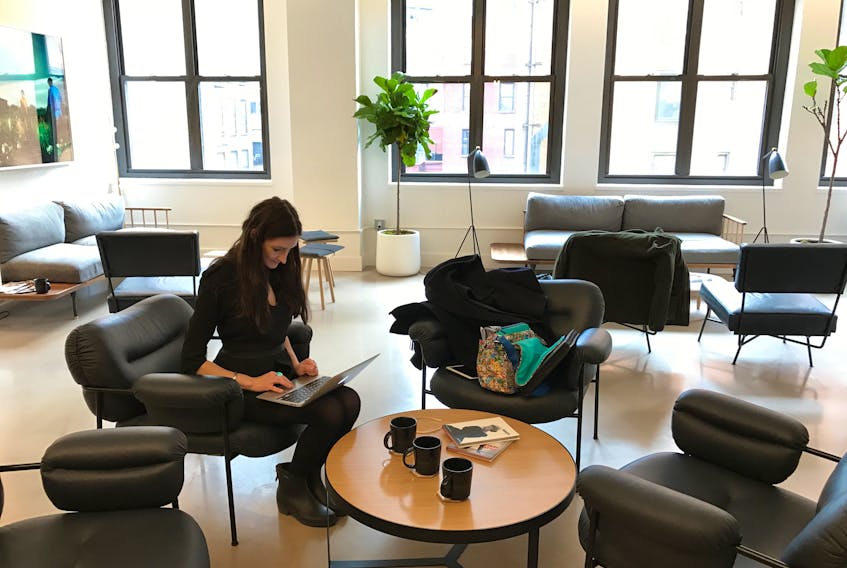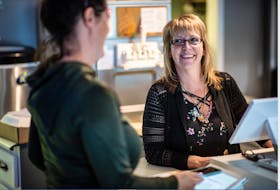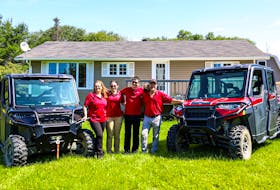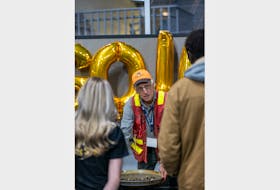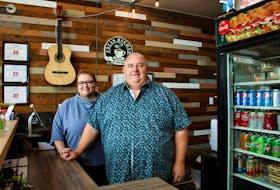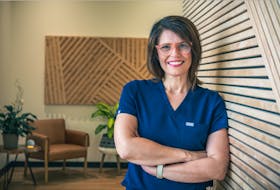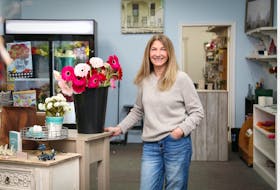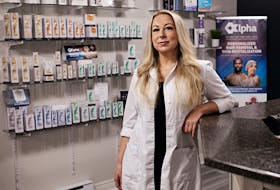As of April 16, 2018, Newfoundland and Labrador kids in Grades K to 12 will be getting hands-on experience in science, technology, engineering and mathematics (STEM) focused activities. Through Brilliant Labs, an Atlantic Canadian organization that supports coding, computational thinking and Maker Education in schools, these kids will be taught the basic language of computers, in hopes they will have the necessary skillset to compete in a technologically advanced world. The problem, however, according to Julie Lewis, owner of SassyTuna Studio in St. John’s, is that not all kids are wired that way. In fact, many parents will have just as much difficulty learning to code, if not more, than many of these kids.
“If I didn’t have a grasp on math when I was eight years old, or I felt like I didn’t fit in because of it, computers would be completely overwhelming to me — computers are not friendly when it comes to baby steps or syntax and things like that,” says Lewis, who has been providing basic computer skills to kids since 2008 “I am trying to reach out to parents of these kids that are now learning code through the provincial initiative, which is geared to making sure kids are able to understand the technology they will undoubtedly need moving forward,” she adds.
As a way to do this, Lewis is developing a series of short, 30-second long videos to help kids (and parents) “get their feet wet,” when it comes to coding, she says. “At the end of the day, the parents are the ones seeing the kids on their devices and they may not know how to talk to them about what they are learning — possibly out of fear of not knowing code themselves,” she adds.
“If you have a child in French immersion, for example, how do you help them if you don’t know French?” Lewis hopes to bridge this gap through her easy to understand videos and classes that will ideally reach every type of learner.
The videos will help parents talk to their kids about coding in a way both can understand. “While there may be some children, who will be experts in coding, there will also be some kids who are struggling, but who may catch on in a few months’ time, but in the meantime, they are feeling the inflexibility of how computers work. When there are 30 kids in a classroom (in most cases), some kids may feel a little overwhelmed or a little fuzzy on the subject,” Lewis explains.
Lewis has also set up a free, 20-seat exploratory session on June 21, in which parents can come in and voice any concerns they may have about the province’s newly adopted coding initiative.
“What our own teachers are finding straight out of the gate is there are no baby steps in code, so it can be overwhelming, especially for some of the younger ones — X and Y coordinates are not something you would really understand at the age of six,” she says.
Current software is based on strong mathematical skills —“It’s just a logical fact,” Lewis says. “And that can separate the mathematical learners from the more creative ones, or the ones that aren’t there, yet,” she adds. And unfortunately, unless there is a way to reach these kids, who may be struggling, they could end up feeling like they don’t belong, or simply aren’t smart enough to seek out opportunities in the future that require strong computer skills. “The truth is, they can learn to bridge that gap, we just have to find a way to help them,” she says.
Lewis recently spent 10 days in Dublin, Ireland at the 2nd Annual Dublin Tech Conference, which was geared to coding and engaging a new generation of kids on how to manoeuver in a technology based world. Apart from networking with some of the world’s best programmers and industry experts, Lewis says the conference only bolstered her passion for helping kids find a way to understand and feel comfortable with coding. Lewis says Casey Neistat, a speaker at the conference and a filmmaker, vlogger and Youtube personality with almsot 10 million followers, is a great example of someone who has found a non-linear way to exist in the tech world. “Casey is definitely an outlier, but a hard-working one. He was not a traditional learner, but he did not let that stop him from international success,” says Lewis.

Julie Lewis and Casey Neistat, 9.5 million subscribers on Youtube, a prolific media artist (who self-proclaims as a poor learner in school) from NYC. (Casey Neistat)
“I’m trying to find out what issues parents and kids are having, so when we put together the software we hope to create, we are bang-on and able to reach all types of learners,” she says. “Right now, the software is built by engineers, not people like me, who also have a creative side. And if you don’t connect with your audience, then you have nothing. A lot of times the software is so simple — A + B = C — or it is so complex that if you miss one little semicolon, the coding is broken. So, it is a pain-point even for me because I don’t think that way, but that doesn’t mean I don’t have a place in the technology world,” she adds.
Unfortunately, if we don’t find a way to help kids learn the basics now, it becomes a leadership issue in the future when they try to find work — “those that grasp the code become the leaders, engineers, meanwhile the other kids may be more in touch in other areas, but they will be shut out because they don’t understand the numbers.”
“I have seen it happen a lot and it’s really not fair. It’s not even a male/female type of thing — those that can shout the loudest and talk the quickest about their knowledge skillset when it comes to computers are the ones that get recognized,” she says. Lewis aims to change this.
To attend Lewis’ introductory session on June 21 at 7 p.m. to 8 p.m. you can email her: [email protected]. You can also visit www.sassytuna.com for more information.

